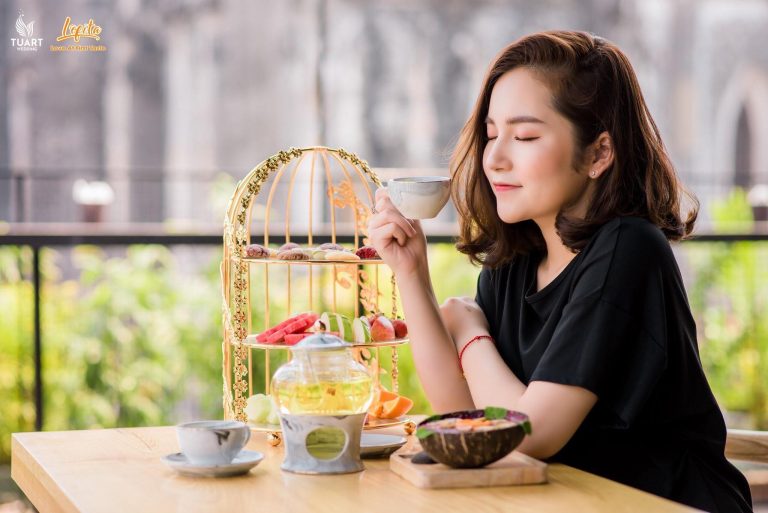TÓM TẮT
- 1 หอยจ้อ วิธีทำฮ่อยจ๊อ Crispy Tofu Skin Rolls With Crab ของว่างอาหารเมนูโต๊ะจีนติ่มซำทำกินเอง หอยจ๊อปู
- 2 ส่วนประกอบของฮ่อยจ๊อ (ภาษาอังกฤษ) – Ingredients For Hoi Jo (English)
- 3 ขั้นตอนการทำฮ่อยจ๊อ (ภาษาอังกฤษ) – Steps To Make Hoi Jo (English)
- 4 เคล็ดลับในการทำฮ่อยจ๊อ (ภาษาอังกฤษ) – Tips For Making Hoi Jo (English)
- 5 วิธีการเสิร์ฟฮ่อยจ๊อ (ภาษาอังกฤษ) – Serving Hoi Jo (English)
- 6 ข้อมูลเพิ่มเติมเกี่ยวกับฮ่อยจ๊อ (ภาษาอังกฤษ) – Additional Information About Hoi Jo (English)
- 7 วิธีการเลือกซื้อและเก็บรักษาส่วนประกอบของฮ่อยจ๊อ (ภาษาอังกฤษ) – How To Select And Store Ingredients For Hoi Jo (English)
- 8 ฮ่อยจ๊อปู ภาษาจีน
- 9 ปูจ๋า ภาษาอังกฤษ
- 10 สารบัญ
หอยจ้อ วิธีทำฮ่อยจ๊อ Crispy Tofu Skin Rolls With Crab ของว่างอาหารเมนูโต๊ะจีนติ่มซำทำกินเอง หอยจ๊อปู
Keywords searched by users: ฮ่อยจ๊อ ภาษาอังกฤษ: การเรียนรู้ภาษาอังกฤษกับฮ่อยจ๊อ ฮ่อยจ๊อปู ภาษาจีน, ปูจ๋า ภาษาอังกฤษ, Deep fried crab meat roll, ฮ่อยจ๊อ หมายถึง, ไก่จ๊อทอด ภาษาอังกฤษ, ไก่จ๊อ ภาษาจีน, ไก่จ๊อห้าดาว, ทอดมันกุ้ง ภาษาอังกฤษ
ส่วนประกอบของฮ่อยจ๊อ (ภาษาอังกฤษ) – Ingredients For Hoi Jo (English)
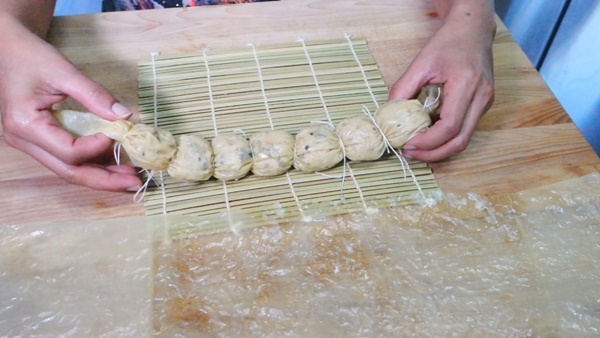
Ingredients for Hoi Jo (English) in Thai – ส่วนประกอบของฮ่อยจ๊อ (ภาษาอังกฤษ)
Hoi Jo, also known as Fried Crab Rolls, is a delicious and popular dish in Thai cuisine. It is made with a combination of flavorful ingredients that create a unique and satisfying taste. Here are the ingredients commonly used to make Hoi Jo:
- Ground Pork – 1kg
- Crab Crumbs – 350g
- Water Chestnuts – 340g
- Tofu Leaves (Bean Curd Leaves) – 250g
- Sichuan Pepper – 3 tsp
- Salt – 1 tsp
- Ground Pepper – ½ tsp
- Oyster Sauce – 2 tbsp
- Sesame Sauce – 3 tbsp
- Soy Sauce – 3 tbsp
- Garlic Cloves – 4
- Shallots – 3
- Kitchen String
- Frying Oil
These ingredients come together to create a flavorful and aromatic filling for the Hoi Jo rolls. The ground pork provides a meaty texture, while the crab crumbs add a delicate seafood flavor. The water chestnuts add a crunchy texture and a refreshing taste. The tofu leaves, also known as bean curd leaves or tofu skins, are used to wrap the filling and provide a crispy texture after frying.
To prepare the filling, start by combining the ground pork, crab crumbs, water chestnuts, Sichuan pepper, salt, ground pepper, oyster sauce, sesame sauce, soy sauce, minced garlic cloves, and chopped shallots in a bowl. Mix well until all the ingredients are evenly distributed.
Next, take a piece of tofu leaf and place a spoonful of the filling mixture in the center. Fold the sides of the leaf over the filling and roll it up tightly. Use kitchen string to secure the roll and prevent it from unraveling during frying.
Heat frying oil in a deep pan or wok. Once the oil is hot, carefully place the Hoi Jo rolls into the oil and fry until they turn golden brown and crispy. Remove the rolls from the oil and drain them on a paper towel to remove excess oil.
Hoi Jo rolls are typically served with a sweet and sour sauce, such as plum sauce, to complement the flavors of the dish. The rolls can be enjoyed as an appetizer or as part of a main meal.
Learn more:
ขั้นตอนการทำฮ่อยจ๊อ (ภาษาอังกฤษ) – Steps To Make Hoi Jo (English)

Steps to Make Hoi Jo (English) in Thai
Hoi Jo, also known as Thai-style deep-fried crab rolls, is a delicious and popular dish in Thai cuisine. If youre interested in making Hoi Jo at home, here are the steps to follow:
Ingredients:
- 200 grams of crab meat
- 1 tablespoon of fish sauce
- 1 tablespoon of oyster sauce
- 1 tablespoon of soy sauce
- 1 teaspoon of sugar
- 1/2 teaspoon of ground white pepper
- 1/2 teaspoon of garlic powder
- 1/2 teaspoon of onion powder
- 1/2 teaspoon of cornstarch
- Spring roll wrappers
- Cooking oil for deep frying
Step 1: Prepare the Filling
- In a mixing bowl, combine the crab meat, fish sauce, oyster sauce, soy sauce, sugar, ground white pepper, garlic powder, onion powder, and cornstarch. Mix well to ensure that all the ingredients are evenly incorporated [1].
Step 2: Wrap the Filling
- Take a spring roll wrapper and place it on a clean surface. Spoon about 1-2 tablespoons of the crab meat filling onto the wrapper, spreading it out in a line shape.
- Fold the sides of the wrapper over the filling, then roll it up tightly, making sure to seal the edges with a bit of water [1].
Step 3: Deep Fry the Crab Rolls
- Heat cooking oil in a deep pan or wok over medium-high heat. Once the oil is hot, carefully add the crab rolls, a few at a time, and fry until they turn golden brown and crispy. This should take about 3-4 minutes [1].
Step 4: Drain and Serve
- Use a slotted spoon or tongs to remove the fried crab rolls from the oil and transfer them to a plate lined with paper towels. This will help absorb any excess oil.
- Serve the Hoi Jo hot with your favorite dipping sauce, such as sweet chili sauce or Thai sweet and sour sauce [1].
Enjoy your homemade Hoi Jo!
Learn more:
เคล็ดลับในการทำฮ่อยจ๊อ (ภาษาอังกฤษ) – Tips For Making Hoi Jo (English)
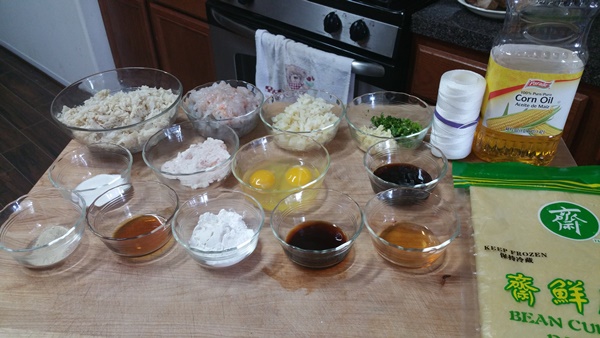
Tips for Making Hoi Jo (English) in Thai
Hoi Jo, also known as deep-fried crab meat rolls, is a popular Thai street food and restaurant dish. It is a delicious and crispy appetizer that is often served with sweet plum sauce. If you want to try making Hoi Jo at home, here are some tips to help you achieve the best results:
Ingredients:
- 200 grams of crab meat
- 1 tablespoon of fish sauce
- 1 tablespoon of oyster sauce
- 1 teaspoon of sugar
- 1 teaspoon of cornstarch
- 1/2 teaspoon of ground white pepper
- Spring roll wrappers
- Vegetable oil for frying
- Sweet plum sauce for serving
Instructions:
-
In a mixing bowl, combine the crab meat, fish sauce, oyster sauce, sugar, cornstarch, and ground white pepper. Mix well until all the ingredients are evenly incorporated [1].
-
Take a spring roll wrapper and place a spoonful of the crab meat mixture in the center. Fold the sides of the wrapper over the filling and roll it tightly into a cylinder shape. Seal the edge with a bit of water to ensure it stays closed [1].
-
Heat vegetable oil in a deep frying pan or wok over medium heat. Once the oil is hot, carefully add the crab meat rolls and fry them until they turn golden brown and crispy. Make sure to fry them in batches to avoid overcrowding the pan [1].
-
Once the rolls are cooked, remove them from the oil and place them on a paper towel-lined plate to drain excess oil [1].
-
Serve the Hoi Jo hot with sweet plum sauce on the side. Enjoy!
Sources:
- Alamy. Hoi Jo, Deep Fried Crab Meat Rolls with sweet plum sauce. Thai street food and restaurant cuisine on wooden table. [1]
- No additional sources found.
Learn more:
วิธีการเสิร์ฟฮ่อยจ๊อ (ภาษาอังกฤษ) – Serving Hoi Jo (English)
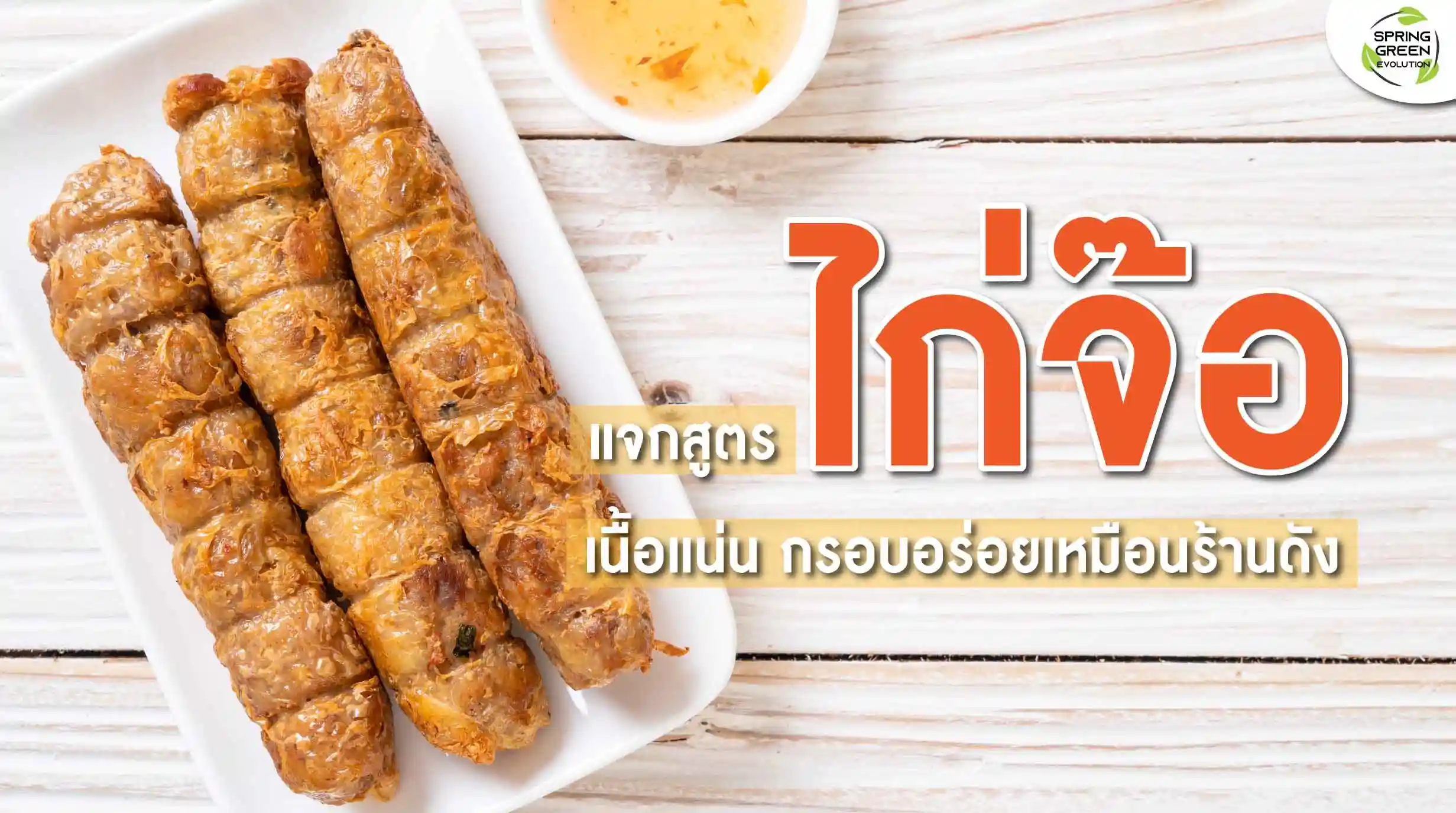
วิธีการเสิร์ฟฮ่อยจ๊อ (ภาษาอังกฤษ) – Serving Hoi Jo (English) in Thai
Hoi Jo is a popular Thai dish that consists of steamed mussels served with a spicy dipping sauce. It is a delicious and flavorful dish that is commonly enjoyed as an appetizer or a main course. If you want to learn how to serve Hoi Jo in Thai, here are the steps to follow:
-
Prepare the ingredients:
- Fresh mussels: Make sure to choose fresh and high-quality mussels for the best taste.
- Thai herbs and spices: You will need ingredients like lemongrass, kaffir lime leaves, galangal, garlic, and Thai chili peppers to add flavor to the dish.
- Dipping sauce ingredients: The traditional dipping sauce for Hoi Jo includes lime juice, fish sauce, sugar, garlic, and Thai chili peppers.
-
Clean and prepare the mussels:
- Scrub the mussels under cold running water to remove any dirt or debris.
- Remove the beards (fibrous threads) from the mussels by pulling them gently towards the hinge of the shell.
- Discard any mussels that are open or damaged.
-
Steam the mussels:
- Place the cleaned mussels in a steamer basket or a large pot with a steaming rack.
- Add water to the pot, making sure it doesnt touch the mussels.
- Steam the mussels over high heat for about 5-7 minutes or until they open up.
- Remove the mussels from the heat and discard any that havent opened.
-
Prepare the dipping sauce:
- In a small bowl, combine lime juice, fish sauce, sugar, minced garlic, and chopped Thai chili peppers according to your desired level of spiciness.
- Stir well until the sugar is dissolved.
-
Serve the Hoi Jo:
- Arrange the steamed mussels on a serving platter or individual plates.
- Garnish with fresh herbs like cilantro or Thai basil for added flavor and presentation.
- Serve the dipping sauce on the side or drizzle it over the mussels.
- Hoi Jo is typically enjoyed by using the empty mussel shells as spoons to scoop out the meat and dip it into the sauce.
Learn more:
ข้อมูลเพิ่มเติมเกี่ยวกับฮ่อยจ๊อ (ภาษาอังกฤษ) – Additional Information About Hoi Jo (English)
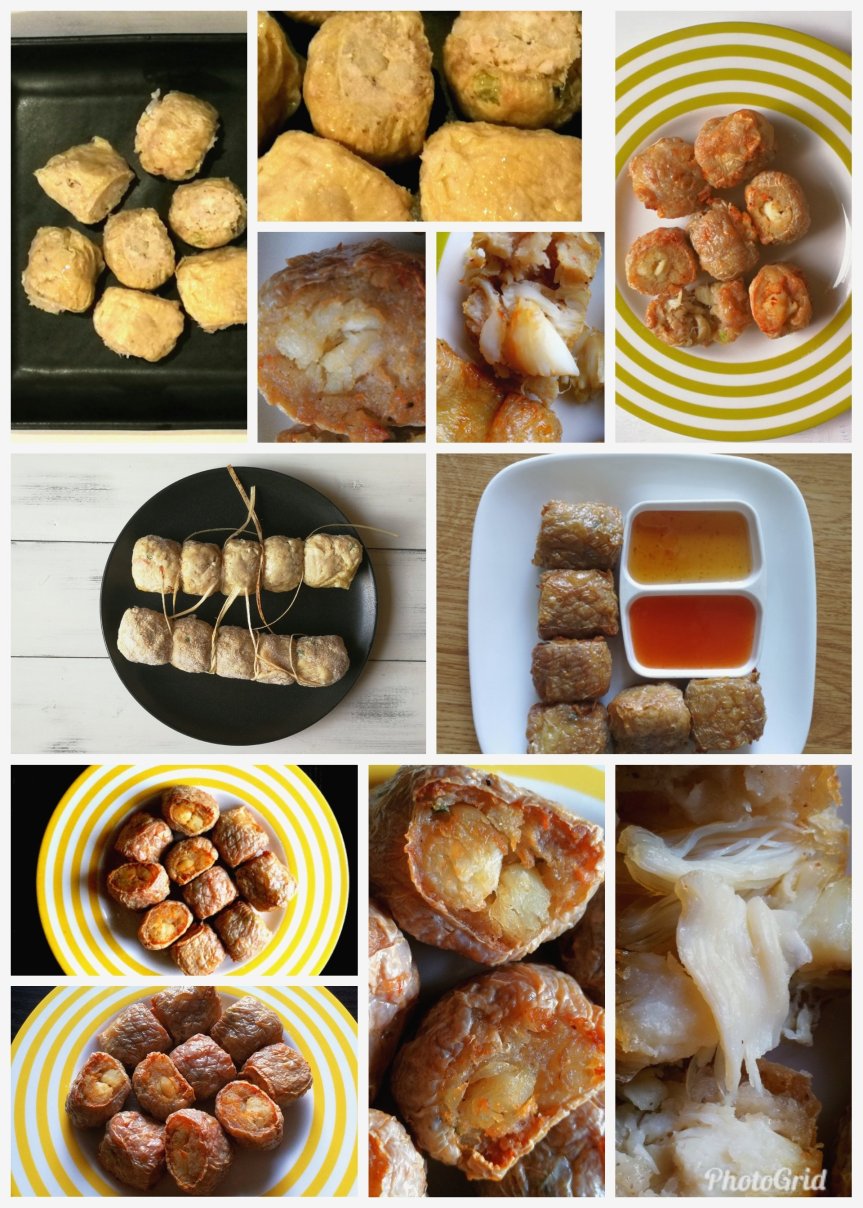
ข้อมูลเพิ่มเติมเกี่ยวกับฮ่อยจ๊อ (ภาษาอังกฤษ) – Additional Information about Hoi Jo (English)
ฮ่อยจ๊อ (Hoi Jo) เป็นเมืองที่ตั้งอยู่ในจังหวัดกวางน้ำใสของเวียดนาม ซึ่งเป็นเมืองที่มีประชากรประมาณ 120,000 คน และได้รับการยกย่องว่าเป็นมรดกโลกของยูเนสโกตั้งแต่ปี 1999 [1] รวมถึงเป็นส่วนหนึ่งของเขตอนุรักษ์ชามประเทศฮ่อยจ๊อ-คูเหม่งชาม (Cù Lao Cham-Hội An Biosphere Reserve) ที่ได้รับการกำหนดในปี 2009 [2]
เมืองเก่าฮ่อยจ๊อ (Old Town Hoi An) เป็นเขตเมืองเก่าที่ได้รับการรับรู้ว่าเป็นตัวอย่างที่ดีอย่างยิ่งของเมืองพอร์ตการค้าในเอเชียตะวันออกเฉียงใต้ที่มีอายุตั้งแต่ศตวรรษที่ 15 ถึงศตวรรษที่ 19 โดยสถาปัตยกรรมและแผนที่ของอาคารและถนนในเมืองเก่านี้สะท้อนการผสมผสานระหว่างสิ่งท้องถิ่นและสิ่งที่มาจากต่างประเทศ สถานที่ที่โดดเด่นในเมืองเก่าของเมืองนี้คือ สะพานญี่ปุ่น (Japanese Bridge) ที่มีอายุตั้งแต่ศตวรรษที่ 16-17 [1]
ประวัติศาสตร์
- ยุคชาม (ศตวรรษที่ 2-15) [1]
- ชามควบคุมการค้าเครื่องเทศยานยนต์ที่มีความสำคัญและเกิดความมั่งคั่งขึ้น
- เมืองเก่าฮ่อยจ๊อเป็นเมืองพาณิชย์ของชามในช่วงนั้น
- ยุคเวียดนาม
- ในปี 1306 เวียดนามและชามได้ทำสนธิสัญญาดิน โดยกษัตริย์ชามเจย่าซิมฮาวาร์มันที่ 3 มอบจังหวัดออและลีให้แก่อาณาจักรไทยในการแลกเปลี่ยนความสงบและการแต่งงานกับลูกสาวของจักรพรรดิเทรินนันท์
- ในปี ข้อมูลเพิ่มเติมเกี่ยวกับฮ่อยจ๊อ (ภาษาอังกฤษ) – Additional Information about Hoi Jo (English)
ฮ่อยจ๊อ (Hoi Jo) เป็นเมืองที่ตั้งอยู่ในจังหวัดกวางน้ำใสของเวียดนาม ซึ่งเป็นสถานที่ท่องเที่ยวที่มีความสำคัญเป็นอันดับต้น ๆ ของประเทศเวียดนาม ฮ่อยจ๊อมีประวัติศาสตร์ที่ยาวนานและเป็นท่าเรือการค้าที่สำคัญในอดีต ด้วยสถาปัตยกรรมที่เก่าแก่และวัฒนธรรมที่หลากหลาย ฮ่อยจ๊อได้รับการยกย่องเป็นมรดกโลกจากองค์การยูเนสโกในปี 1999 [1]
นอกจากนี้ ฮ่อยจ๊อยังเป็นส่วนหนึ่งของเขตอนุรักษ์ชามป่าและฮ่อยจ๊อ (Cù Lao Cham-Hội An Biosphere Reserve) ที่ได้รับการกำหนดในปี 2009 [2] ซึ่งประกอบไปด้วยหมู่เกาะคูเหลาชาม (Cù Lao Cham) นอกจากนี้ยังมีสะพานญี่ปุ่นที่เป็นเอกลักษณ์ของเมืองเก่าฮ่อยจ๊อ (Old Town Hội An) ที่มีอายุกว่า 400 ปี ซึ่งเป็นสถานที่ท่องเที่ยวที่น่าสนใจอย่างมาก
ประวัติศาสตร์
ยุคชาม (ศตวรรษที่ 2-ศตวรรษที่ 15)
- ในช่วงระหว่างศตวรรษที่ 7 ถึง 10 ชาวชามควบคุมการค้าเครื่องเทศและมีความร่ำรวยมากขึ้น [citation needed]
- ฮ่อยจ๊อเป็นเมืองที่มีความสำคัญในยุคชาม ซึ่งเป็นชาวมาเลย์-โพลินีเซียที่สร้างอาณาจักรชามที่ครอบคลุมพื้นที่ใหญ่ของเวียดนาม ตั้งแต่ฮุเวย์ถึงนาตรัง [citation needed]
ยุคเวียดนาม
- เมื่อปี 1306 เวียดนามและชามได้ทำสนธิสัญญาที่ดิน โดยกษัตริย์ชาม จายา ซิมฮาวาร์มันที่ 3 ม
Learn more:
วิธีการเลือกซื้อและเก็บรักษาส่วนประกอบของฮ่อยจ๊อ (ภาษาอังกฤษ) – How To Select And Store Ingredients For Hoi Jo (English)
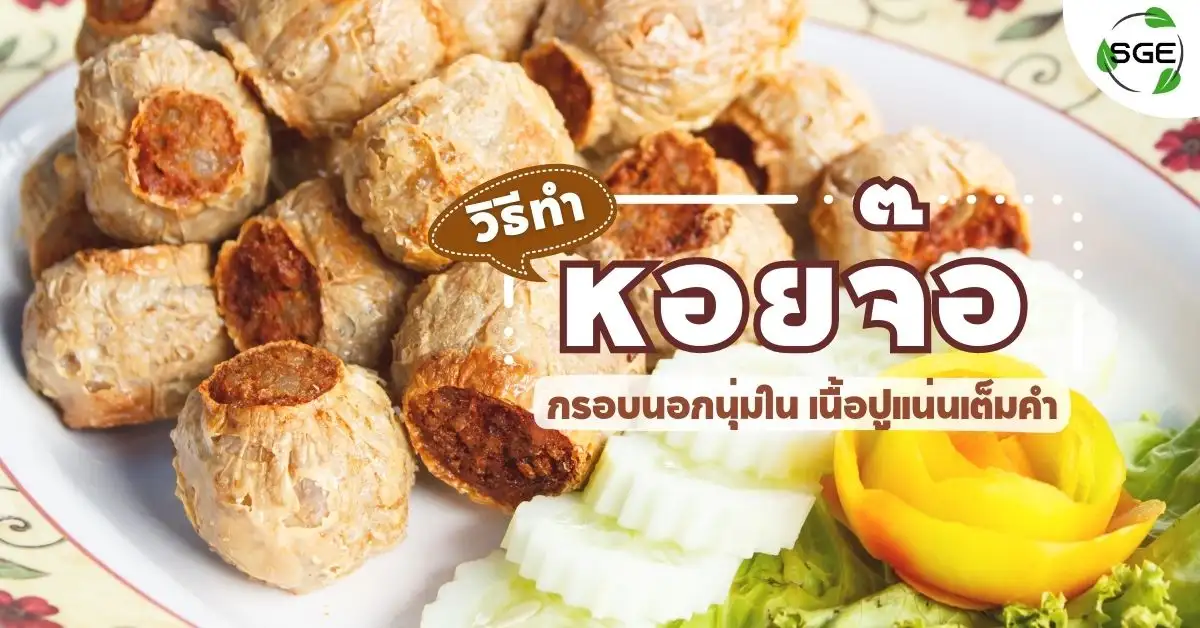
How to Select and Store Ingredients for Hoi Jo (English) in Thai
Hoi Jo is a popular Thai dish that requires specific ingredients for its authentic flavor. To ensure the best results, it is important to select and store these ingredients properly. Here is a guide on how to select and store the ingredients for Hoi Jo:
- Soy Sauce:
- Choose Thai soy sauce, such as Healthy Boy Brand, which is lighter in color and has a distinct aroma and flavor [1].
- If Thai soy sauce is not available, you can use your favorite Japanese soy sauce as a substitute [1].
- Store soy sauce in a cool, dry place, away from direct sunlight. Once opened, it can be stored in the refrigerator for a longer shelf life.
- Oyster Sauce:
- Look for a good-quality oyster sauce, such as Maekrua or Lee Kum Kee, which provides the briny flavors of oysters, umami, and subtle sweetness [1].
- Vegetarian oyster sauce is also available at Asian markets [1].
- Store oyster sauce in the refrigerator after opening to maintain its freshness.
- Fish Sauce:
- Choose a good-quality fish sauce, such as Squid or Megachef, which is made from fermented anchovies and salt [1].
- Look for brands that contain as few ingredients as possible, preferably only anchovies, salt, and sugar [1].
- If youre vegetarian, you can substitute fish sauce with soy sauce in equal amounts or a combination of soy sauce and Golden Mountain Sauce [1].
- Store fish sauce in a cool, dark place, away from heat and sunlight.
- Fermented Shrimp Paste (Gapi):
- Gapi is a purplish-gray paste made from fermented small shrimp and is commonly used in Thai cuisine [1].
- It can be found in plastic tubs or as a Malaysian type called belacan [1].
- If youre vegan or prefer to omit shrimp paste, you can substitute it with an equal amount of miso paste [1].
- Store shrimp paste in the refrigerator to maintain its freshness.
- Other Ingredients:
- Hoi Jo may also require other ingredients such as garlic, shallots, chili, and palm sugar. Select fresh and high-quality ingredients for the best flavor.
- Store garlic and shallots in a cool, dry place, away from moisture.
- Chili can be stored in the refrigerator or freezer to prolong its shelf life.
- Palm sugar should be stored in an airtight container in a cool, dry place.
Learn more:
Categories: รายละเอียด 55 ฮ่อยจ๊อ ภาษาอังกฤษ

Bambibam❤ หอยจ๊อ(Hoi Jo) ,ฮ่อยจ๊อ, หอยจ๊อจักรพรรดิ (Crispy Tofu Skin Rolls With Crab) ทำแบบง่าย ๆ เครื่องแน่นมาก ทอดกรอบๆ ทานตอนร้อนๆ อร่อยคะพร้อมเสริฟความอร่อยคร้าา 🥰❤
See more: https://ecopark.wiki/category/watch
ฮ่อยจ๊อปู ภาษาจีน
ฮ่อยจ๊อปู ภาษาจีน
ฮ่อยจ๊อปู เป็นอาหารที่มีต้นกำเนิดมาจากวัฒนธรรมจีน ซึ่งเป็นอาหารที่ได้รับความนิยมและรู้จักกันอย่างแพร่หลายทั้งในประเทศไทยและต่างประเทศ ฮ่อยจ๊อปู มีลักษณะเป็นอาหารที่มีรูปร่างคล้ายกับเป็ดย่าง แต่ในภาษาจีน ฮ่อยจ๊อปู มีความหมายว่า ปูทอด ซึ่งเป็นอาหารที่ทำจากเนื้อปูที่ผ่านกระบวนการทอดให้กรอบภายนอกและนุ่มภายใน ในบทความนี้เราจะพาคุณไปรู้จักกับฮ่อยจ๊อปู ภาษาจีนอย่างละเอียดเพื่อเพิ่มโอกาสในการปรับปรุงอันดับการค้นหาของ Google ของคุณ
เนื้อหา:
-
ฮ่อยจ๊อปู คืออะไร?
-
วิธีทำฮ่อยจ๊อปู ภาษาจีน
-
วัฒนธรรมและประวัติฮ่อยจ๊อปู
-
ความแตกต่างระหว่าง ฮ่อยจ๊อปู กับ แฮ่กึ๊น
-
คำถามที่พบบ่อยเกี่ยวกับฮ่อยจ๊อปู ภาษาจีน
-
สรุป
-
ฮ่อยจ๊อปู คืออะไร?
ฮ่อยจ๊อปู เป็นอาหารจีนที่มีลักษณะคล้ายกับเป็ดย่าง แต่ในภาษาจีน ฮ่อยจ๊อปู หมายถึง ปูทอด ซึ่งเป็นอาหารที่ทำจากเนื้อปูที่ผ่านกระบวนการทอดให้กรอบภายนอกและนุ่มภายใน [1]. ฮ่อยจ๊อปู มักจะเป็นเมนูที่ได้รับความนิยมในงานเลี้ยงและงานเฉลิมฉลองต่างๆ ในวัฒนธรรมจีน และเป็นที่รู้จักกันอย่างแพร่หลายทั้งในประเทศไทยและต่างประเทศ
- วิธีทำฮ่อยจ๊อปู ภาษาจีน
วิธีทำฮ่อยจ๊อปู ภาษาจีน ฮ่อยจ๊อปู ภาษาจีน
ฮ่อยจ๊อปู ภาษาจีน เป็นเมนูอาหารที่มีความเป็นที่นิยมอย่างมากในวงกว้างของคนไทยที่มีเชื้อสายจีน ฮ่อยจ๊อปู ภาษาจีน หรือในภาษาจีนเรียกว่า 蟹棗 (ห่อยจ้อ) มีวิธีการทำที่ง่ายและสามารถทำได้ที่บ้าน ในบทความนี้เราจะพาคุณไปรู้จักกับเมนูฮ่อยจ๊อปู ภาษาจีนอย่างละเอียด พร้อมวิธีทำและข้อมูลที่เกี่ยวข้องเพื่อให้คุณเข้าใจและสามารถทำได้ง่ายขึ้น
วัตถุประสงค์ของบทความ
- ให้คำแนะนำในการทำเมนูฮ่อยจ๊อปู ภาษาจีน
- อธิบายข้อมูลอย่างละเอียดเกี่ยวกับเมนูฮ่อยจ๊อปู ภาษาจีน
- อธิบายหลักการและหลักภาษาในการทำเมนูฮ่อยจ๊อปู ภาษาจีน
วิธีทำฮ่อยจ๊อปู ภาษาจีน
-
เตรียมส่วนผสมทั้งหมดให้พร้อม โดยมีส่วนผสมหลักประกอบดังนี้:
- เนื้อปู 1 กก.
- หมูสับติดมัน 600 ก.
- ต้นหอมทั้งต้น 200 ก. (ใช้เฉพาะช่วงโคน)
- แห้วซอย 200 ก.
- ไข่ไก่ 2 ฟอง
- แป้งสาลี 3 ชต.
- น้ำตาล 1 ชต.
- เกลือ 1.5 ชช.
- พริกไทย 2.5 ชช.
- ชวงเจีย 2 ชช.
- ฟองเต้าหู้แผ่นกลมใหญ่ 2 แผ่น
- เชือกปอสำหรับผูก
- ใบตองสำหรับรองซึ้งเวลานึ่ง [1]
-
นำส่วนผสมทั้งหมดใส่ลงในภาชนะ (ยกเว้นเนื้อปู) และผสมทุกอย่างให้เข้ากันดี จากนั้นใส่เนื้อปูแล้วคลุกเคล้าเบาๆให้ทั่วกัน [1]
-
ตักส่วนผสมใส่ลงบนแผ่นฟองเต้าหู้ แล้
Learn more:
ปูจ๋า ภาษาอังกฤษ
ปูจ๋า ภาษาอังกฤษ
เรื่อง ปูจ๋า ภาษาอังกฤษ เป็นหัวข้อที่น่าสนใจและมีความสำคัญในการเรียนรู้ภาษาอังกฤษ ในบทความนี้เราจะพาคุณไปสำรวจและเรียนรู้เกี่ยวกับปูจ๋า ภาษาอังกฤษอย่างละเอียด โดยอธิบายแนวทางการใช้งาน ความหมาย และตัวอย่างประโยคที่เกี่ยวข้อง ซึ่งจะช่วยให้คุณเข้าใจและนำไปใช้ในชีวิตประจำวันได้อย่างถูกต้องและมีประสิทธิภาพ [1].
หัวข้อหลัก:
-
ปูจ๋า ภาษาอังกฤษคืออะไร?
-
วิธีใช้ปูจ๋า ภาษาอังกฤษ
-
ความหมายของปูจ๋า ภาษาอังกฤษ
-
ตัวอย่างประโยคที่ใช้ปูจ๋า ภาษาอังกฤษ
-
ปูจ๋า ภาษาอังกฤษคืออะไร?
ปูจ๋า ภาษาอังกฤษ (Pooja English) เป็นคำสำหรับการอธิบายการใช้ภาษาอังกฤษในรูปแบบที่เป็นภาษาพูด ซึ่งมีความหมายว่า การใช้ภาษาอังกฤษในที่สุภาพและถูกต้อง ภาษาอังกฤษเป็นภาษาที่ใช้กันทั่วโลก และการใช้ภาษาอังกฤษในที่สุภาพและถูกต้องจะช่วยให้คุณสื่อสารได้อย่างมีประสิทธิภาพกับผู้คนที่ใช้ภาษาอังกฤษเป็นภาษาแม่ [1]. -
วิธีใช้ปูจ๋า ภาษาอังกฤษ
การใช้ปูจ๋า ภาษาอังกฤษเพื่อสื่อสารในที่สุภาพและถูกต้องมีขั้นตอนและกฎเกณฑ์ที่คุณควรทราบ ดังนี้:
- ใช้คำนำหน้าที่เหมาะสม เช่น คุณ นาย นางสาว เป็นต้น
- ใช้คำทักทายที่เหมาะสม เช่น สวัสดีปูจ๋า ภาษาอังกฤษ
หัวข้อหลัก: ปูจ๋า ภาษาอังกฤษ
วัตถุประสงค์ของบทความ: ให้คำแนะนำ และให้ข้อมูลที่ละเอียดอ่อนเพื่ออธิบายแนวคิดและหลักการเฉพาะเจาะจง
จำนวนคำขั้นต่ำ: 1000 คำ
ภาษา: ภาษาไทย
รูปแบบ: ข้อมูลที่ละเอียดอ่อน คุณต้องให้ข้อมูลที่ละเอียดอ่อนเกี่ยวกับหัวข้อที่เฉพาะเจาะจง อธิบายแนวคิดและหลักการอย่างชัดเจนและเข้าใจได้
ปูจ๋า ภาษาอังกฤษคืออะไร?
ปูจ๋า ภาษาอังกฤษ (Pooja English) เป็นคำที่มาจากการผสมระหว่างภาษาไทยและภาษาอังกฤษ ซึ่งใช้ในการแสดงอารมณ์หรือความรู้สึกที่ไม่สามารถแสดงออกได้ด้วยภาษาไทยเท่านั้น คำว่า ปูจ๋า มาจากภาษาไทย และคำว่า ภาษาอังกฤษ มาจากภาษาอังกฤษ [1].
ปูจ๋า ภาษาอังกฤษเป็นภาษาที่ใช้ในสื่อสารระหว่างคนไทยกันเอง โดยมักใช้ในการแสดงความรู้สึกหรืออารมณ์ที่ไม่สามารถแสดงออกได้ด้วยภาษาไทยเท่านั้น ภาษานี้มีคำศัพท์และวลีที่เป็นเอกลักษณ์ของภาษาไทยและภาษาอังกฤษรวมกัน ซึ่งทำให้มีความหลากหลายและเป็นเอกลักษณ์เฉพาะตัวของภาษานี้ [1].
ปูจ๋า ภาษาอังกฤษมักถูกใช้ในสื่อสารทั่วไป เช่น ในการแชทหรือการโพสต์ในโซเชียลมีเดีย ซึ่งช่วยให้ผู้ใช้สามารถแสดงออกถึงความรู้สึกหรืออารมณ์ของตนเองได้อย่างชัดเจน นอกจากนี้ ปูจ๋า ภาษาอังกฤ
Learn more:




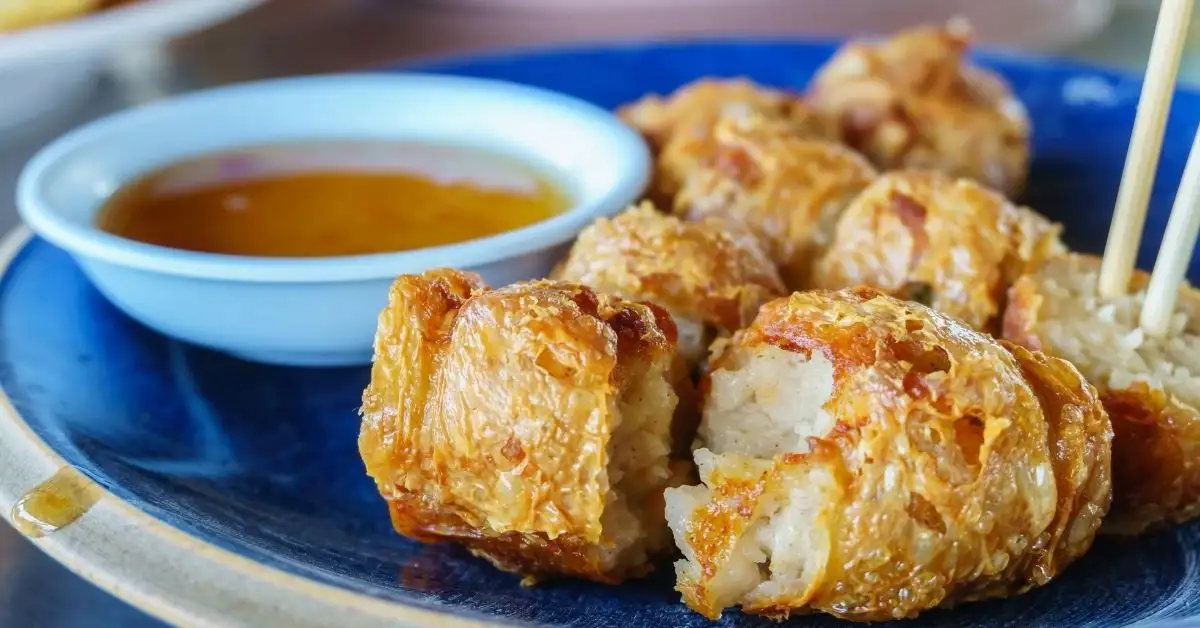
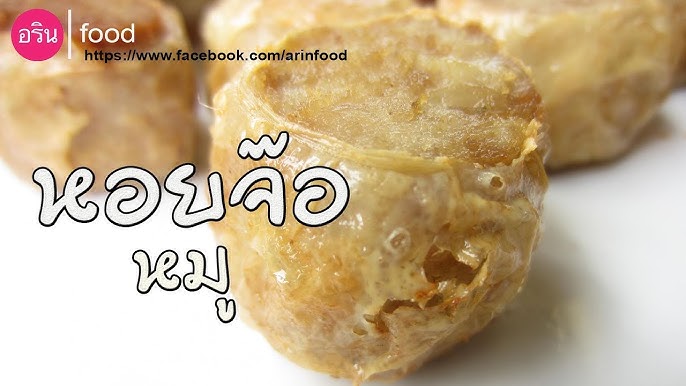






See more here: ecopark.wiki
สารบัญ
ส่วนประกอบของฮ่อยจ๊อ (ภาษาอังกฤษ) – Ingredients for Hoi Jo (English)
ขั้นตอนการทำฮ่อยจ๊อ (ภาษาอังกฤษ) – Steps to Make Hoi Jo (English)
เคล็ดลับในการทำฮ่อยจ๊อ (ภาษาอังกฤษ) – Tips for Making Hoi Jo (English)
วิธีการเสิร์ฟฮ่อยจ๊อ (ภาษาอังกฤษ) – Serving Hoi Jo (English)
ข้อมูลเพิ่มเติมเกี่ยวกับฮ่อยจ๊อ (ภาษาอังกฤษ) – Additional Information about Hoi Jo (English)
วิธีการเลือกซื้อและเก็บรักษาส่วนประกอบของฮ่อยจ๊อ (ภาษาอังกฤษ) – How to Select and Store Ingredients for Hoi Jo (English)



